Note
How do I bring up my word-per-part count without having to add many things after the first write? Because at the moment I can rarely hit 1000 words on a chapter's first draft, I usually hit 800-900, but I want to be able to write more than just that.
Strengthening the Underwritten Chapter.
The most useful advice I can give is the general chapter outline I use to help with pacing. I touched on it in this post, but I’ll expand a bit here in order to (hopefully) steer you away from underwriting.
The Opening.
This may be longer or shorter depending on how much time has passed since the last chapter, whether there’s an atmospheric change, and whether the characters are someplace which has been described before, but it’s always worth touching on at least one of these points:
Where are the characters? Describe something about the place, including at least one sensory detail like smell, temperature, sound, taste. Keep in mind the general feeling you want to give off.
What are the characters doing? Describe positions throughout the space, general actions. Show emotional states through this, using body language, expressions, relative positioning.
How does the pov character feel? Set up their internal state through emotions, thoughts, and related actions.
The Initiating Point.
In which some goal is introduced or brought up. This can be anything from an object, to information, to convincing another character of something, to relationship development, etc.
But the protagonist must want something. All other prominent characters should want something as well, though sometimes the things they want are the same as the protagonist, sometimes they’re less important to the plot, and sometimes only the writer is aware of them.
The characters set about achieving this goal, through actions and dialogue.
The Rising Tension.
The thing the characters want becomes harder for them to reach. The protagonist is forced to make choices they think will best lead them to this goal, and face consequences for these choices.
If your chapters aren’t long enough, the most likely problem is that you’re not giving your protagonist enough of a challenge during the rising tension phase. Think about include at least one of these things to heighten the challenge:
Who or what is physically stopping your protagonist from reaching their goal?
Which of your protagonist’s flaws or conflicting goals are making it hard for them to do what they much to reach the goal?
What new obstacles can you throw at your protagonist to keep them from it and what bad things can happen to disrupt the progress the protagonist has made?
What hard choices must your protagonist in order to reach their goal?
What must the protagonist give up in the process?
Don’t forget to include emotions during this segment, not just dialogue and action! Characters react and feel and that’s what governs their actions. Leaving the emotional aspects out will produce a scene with feels flat and is too short.
The Climax.
This is the highest point of tension, with the most to gain and the most to loose. The protagonist makes a choice and either gets what they want, or fails so thoroughly they know they will no longer achieve their goal at the present time.
The Falling Tension.
The protagonist either relishes in their spoils for a moment, possibly before a new goal is introduced (either long or short term), or they wallow in their loss, and possibly begin a path towards planning their next move to achieve the old goal or something better.
In this segment you can return to the slower, more contemplative pace of the opening, giving the reader a moment to dwell on what happened and what it means to and for the characters.
More things to consider:
Most chapters should be between 2k and 5k words, but this will vary drastically between genres and individual chapters.
Unless you’re writing a children’s book or using chapter length for experimental purposes, you should not have more than one or two chapters under 1k words, and hopefully not many below 2k words. (Short chapters help the reader move quickly through the book but you must provide enough time to ground them in a scene.)
When cutting a scene into two separate chapters, the best place to end the first chapter is generally during the second half of the rising tension.
Sometimes it works fine to cut off the wrapping up segment and apply the ‘wrapping up’ basic concepts to the next chapter’s opening section. This is especially the case when you’ve had a few extremely tense scenes/chapters in a row and are now preparing to have a less tense chapter to give the reader a break.
Not all chapters/scenes must follow the above pattern!!!! It’s a guideline that’s extremely helpful for giving you chapters which flow well and have just the right amount of meat in them, but it’s still just a guideline.
tl;dr You can flesh out your chapters by providing a strong set up, thoroughly challenging your protagonist before you allow them to succeed, and closing with a moment of contemplation on what’s to come, with a good balance of both action and emotion throughout the chapter.
3K notes
·
View notes
Note
Hi, first off I loooooove your writing! It's so colorful and awesome! But, umm, if you would like to, could you perhaps write something about some sort of summoning ceremony where the summoned entity (maybe?) falls for the sacrificial thing? (Or vice-versa or, well, it's just a scenario that made me wonder what you would do with, that's all.)
“Stop.”
The knife froze still pressed against the sacrifice’s neck. She felt a rush of dizziness. Her breath stuttered. She strained to see the speaker, but the voice came from the darkness beyond the circle of candlelight she was bathed in.
Blood trickled down her throat onto the altar.
“Who’s there?” the man called.
“You know who I am, you summoned me.” The demon stepped closer. Her eyes were blood-coloured, ruby hard and cold. She wasn’t beautiful so much as striking, all sharp edges and sharp teeth. Regal horns curled up out of her dark hair. “I hope it wasn’t simply to make me repeat myself. Stop.”
“But the sacrifice-”
“-My sacrifice,” the demon said. “It is not for you to decide what to do with my sacrifice, is it?”
The man set the knife down with a clatter.
“Leave us.”
“But-”
The demon cut a look at him, and something in her look must have burned him because he recoiled from the room as if he’d been scalded. They were left alone.
The sacrifice wasn’t sure if that was going to be any better. Maybe the demon wanted to inflict some slower death, some more awful torment than a slit throat. She just wanted it to be over.
The demon stood over her, examining her. A clawed finger stroked over the bead of blood on her throat, her fluttering pulse.
“Are you going to kill me?” the sacrifice rasped. Her mouth felt unbearably dry.
“No,” the demon replied. “Sacrifice: an act of slaughtering an animal or person or surrendering a possession as an offering to a deity. You are not his possession to surrender for you are not a possession, and what true sacrifice is the death of a human girl? Humans die all the time, inevitably. Your murder is no sacrifice.”
The sacrifice swallowed. “Are you going to let me go?”
“Would you like me to?” the demon asked.
Probably, she should say yes. Maybe she could run. She was tired.
“There is an alternative,” the demon continued, softer now, a gleam in her eyes. “Do you know why I was summoned?”
“You can grant wishes in return to offerings. Blessings.” Of a sort, anyway. “Power.”
“I could tear down armies,” the demon said. “Conquer worlds. Raze and rebuild civilizations, should you want me to, depending on the offerings given to me. I can certainly kill a man.”
The sacrifice blinked at her.
“No one would ever harm you again,” the demon said. “I protect mine.”
She couldn’t think straight. It was a lot, all at once, and she ached, and the blood she’d lost already made her vision haze.
The sharp claws moved up and cut through the binds holding her to the altar as if they were nothing. “Get some sleep, some food,” the demon suggested. “And think about it.”
Numbly, she tried to sit up. The room gave a sickening lurch. The shock left her legs as useless as confetti.
The demon caught her waist and hauled her up into blazingly warm, strong arms. In a flash of glossy black feathers, they were gone.
That was how it started.
The sacrifice’s name was Carmen.
There was a lot that the demon could say about Carmen. Carmen was like the breaking of dawn on a spring morning, light and fresh and lovely, but still holding her memory of night. Brave. In other circumstances, perhaps, she would have been a true and perfect sacrifice - the one that offered itself up. Those were so rare.
Most of the world never wanted to give up what was truly important to them, or funnily made what was truly important other people as if other people shouldn’t get a say in their blood spilled across candlelit altars. Children. Wives. Girls. Boys. Lovers. All the things that power hungry people gave up as if children, wives, girls, boys and lovers were ever their’s to actually give.
“What would being yours mean?” Carmen looked calmer now, away from that place. She had slept, and ate, and drank. Changed into fresh comfortably clothes that weren’t the ridiculous paper-thin wrappings of a ceremonial outfit, as if she was a gift to be bound in ribbons and glitz. “Don’t give me a dictionary definition,” she added, before the demon could open her mouth. “I mean practically.”
The demon sat opposite her. She raised a brow, with amusement. “Well, it rather depends what you choose to sacrifice, doesn’t it? If you are mine completely, then I am completely yours. Your enemies are mine. My enemies are yours. You do as I command and in return I grant your deepest wish. Or, perhaps, you would like to be my eyes and ears instead. You get knowledge. Or, your heart, you could always sacrifice that to me.”
“I don’t ever want this to happen to anyone again.” There was a delightful fierceness to her tone, demon-sharp, those who would surrender heaven for their right. “I don’t ever want anyone sacrificed against their will again. It is not the place of the old to sacrifice the young, nor - no. Never again.”
“They will learn not to. I can promise you that,” the demon murmured.
It was a - surprising - proposition. She rather liked it, something new, something powerful and, dare she say it, good? It was such a rare novelty for a demon to get to do good. It was such a rare novelty that anyone would even ask.
Carmen released a breath. “Then I’m yours.”
That was how it started.
The world bowed, civilizations bent.
The sacrifice slipped her hand into the demon’s, and their hearts pounded. They shared a smile.
That was how it ended.
2K notes
·
View notes
Note
Could you write a snippet about a really sweet, girl next door protagonist who has a really dark superpower, and an antagonist who has a traditionally good/light superpower?
“I don’t understand,” the protagonist said, “how you can go to such lengths to hurt people when it is so easy for you not to.”
Really, a healer should be the first person in the world to use her abilities for good. It was an ideal way to help people. The antagonist was practically born to make the world a better place. Unlike her - her, who could only harm. When every touch she gave caused death.
The antagonist stepped closer to her, fearlessly.
The protagonist skittered back in terror of touching, hands folded close to her chest. A month ago, she’d been a normal girl. She’d had a life. She’d been happy. God, she’d been happy - how had she not appreciated that at the time?
“You kill anyone you touch,” the antagonist said. “I heal anyone I touch. Have you ever had someone break their fists on your skin, only to be instantly healed for the hurting for you?” The antagonist’s mouth twisted. “The world doesn’t deserve to be healed. It deserves to die, and let that be a favour to the universe. Why else would it have birthed a weapon as perfect as you?”
The protagonist flinched at that word. Weapon. It haunted her, stalked her, shadowed her - the thing she never wanted to be, yet always seemed to manage.
“But, maybe,” the antagonist said, “between us we could make it better. A balance. Come with me, Sara.”
“So I can kill people for you?” No. This should never have happened, this should never have been her life. She hadn’t wanted this! She hadn’t wanted any of this!
They should have got each other’s powers. Her life had been perfect before this, and now she couldn’t even think about kissing her crush without killing them! She couldn’t hold her mum’s hand! She couldn’t pet her dog or even let him near her with his wounded, not-understanding eyes and his friendly nuzzling attempts to make her feel better. He’d die. Everything died.
Except maybe…if they touched each other, would she be healed of this power? Or would the antagonist just die? It was too risky. She moved back again, her back hitting the wall.
“Some people deserve to die. Don’t you agree? Your way is painless. A touch and they’re gone - is leaving them to rot in prison better?” The antagonist continued to prowl closer. “You’ve seen what I can do. Is that better?” To keep people alive in pain, but alive, unable to die, always healing just before it got too much. “You can be mercy. I can be justice.”
“Nothing you do is justice.” Her voice shook.
“What else would you do instead? Nothing?” The antagonist stopped only inches away, in touching distance. “You would lock yourself away from the world like a princess in a tower?” A smile curled the antagonist’s lips as they looked the protagonist up and down - blue eyes, golden curls. Quintessential. “Is that better?”
She reached out a hand.
“No-”
-It didn’t kill the antagonist. They healed too fast. A flawless equilibrium, as if they were really just two people.
The antagonist’s smile broadened, eyes intent on Sara’s face.
“That’s not a life,” the antagonist said. “You deserve a life, Sara. What you can do is amazing. Do you even know the limits of it? I bet you haven’t even tried to find out.”
For a moment, the touch distracted her completely. She’d forgotten what a simple touch was like, when it didn’t kill someone, when for once she didn’t have to be scared.
“Don’t you think you deserve more than this?” the antagonist coaxed.
The barn was in the middle of nowhere. She was hungry. Cold. She wanted her life back.
“You don’t have to be scared.” The antagonist drew her closer. “Death is a natural part of life. Think of all the people you could help - the sick, the suffering. You could do so much good in the world if you wanted to. You don’t have to be scared.”
But she did have to be scared. There was nothing kind in those healing hands.
“I said no.”
The smile dropped from the antagonist’s lips. “Then I suppose we’re doing this the hard way.”
The antagonist attacked.
1K notes
·
View notes
Note
Hey! I am a fanfiction writer and I was going through your prompts. You're really amazing and your ideas are mind blowing! If it's not too much, can you do a few prompts in which both the hero and villain is trying to save the community(in their ways) and when a mutual nemesis arises, they join forces with the hero continuously becoming flustered when the villain flirts with them. I'll really love your aid. Keep up the good work!
this request was a bit complicated to fit all of it into one prompt, so I did one prompt for each ‘section’ of the request
hero and villain is trying to save the community (in their ways) “Now listen here, hero. I know you don’t like my methods, but we’re aiming for the same goal here, so do us all a favour: sit back and let me work.” They finished tying the hero to the chair, tying the final knot with a flourish. “My way is simply more effective-”“Murder is not more effective-!”“Yes it is,” chided the villain. “It’s just against your morals. Which is fine -I’m not asking you to kill for our goals. I’m just asking you to let me do it for you.”“No!”
mutual enemy arises“And I thought you were annoying!” the hero complained, falling bloody and bruised onto the villain’s couch. “This new villain, they’re- they’re just so-”“Evil?” The villain raised an eyebrow. “So am I, sunshine. Only difference is I share your goals, and they don’t. In fact, I’d say they oppose both of us, so it would make sense-”The hero groaned. “Don’t say it-”“-if we teamed up to get rid of them. What do you say?”“…fine. But no murder, alright?”“No promises.”
villain flirts with hero“You’re really cute when you’re flustered.”The hero felt the heat in their cheeks grow even as they scowled. “You might look cute if you ever shut the hell up,” they retorted.The villain smiled, utterly unperturbed, and reached out a gloved hand to brush along the heroes cheek. “I thought it was the shared goals, or maybe your sparky acts of defiance, or maybe you just looked good beaten up. But no,” their smile softened, but their was still mischief in their eyes, “you’re just cute.”“You won’t be saying that once I get you back behind bars.” But the hero didn’t lean away from the villain’s touch, and that told them both everything they needed to know.
88 notes
·
View notes
Text
Q&A: Crossbows and DOPE
operahousebookworm said to howtofightwrite:
For a character with a military background and proficiency in modern firearms, would any additional training be necessary for them to master a crossbow? If so, what kind?
For actual training? Not much. They’d need to be run through how to reload, and maintain the weapon. If they were a fairly quick study, that should only take a couple hours. Mastering the weapon would require lots of practice.
The problem is, the crossbow fires a much slower, heavier, projectile. This doesn’t invalidate basic concepts of how to aim and fire, but it does change the parameters where the weapon will be effective. Drop will be far more severe, meaning they’ll need to compensate for that, and the overall range will be much more limited (roughly 50 – 60 meters.)
In order to do that, they’ll simply need to spend time on a range practicing and gathering data on how the weapon performs.
When shooting, it’s very important to collect Data on Previous Engagements (or DOPE) for that weapon. This primarily involves learning how that individual weapon behaves at various ranges. (So, your character would be learning how their rifle or crossbow behaves, not necessarily all rifles and crossbows.) Some will keep DOPE as physical records, others will simply internalize the information based on how the weapon handles. You can collect some of this information online, but ultimately you need to confirm it with the actual weapon before you can count on it.
The end result is, they can probably swap over to a crossbow with a minimum of effort, but they would need to spend time on the range getting a feel for how the weapon handled, particularly in relation to compensating for bolt drop.
Drop is a concept in shooting involving the projectile as a physical object. While it is traveling away from you at high speed (~400 feet per second with a crossbow bolt) it is also falling. Gravity does not give bullets, bolts, or arrows, a pass simply because they’re already going in one direction. This is referred to as, “drop.” When aiming you need to account for this. Drop can be compensated by either zeroing the sights/optics for a specific range, or manually by the shooter.
For example, a shooter who zeroes their scope for 100 meters, will need to aim below the target at closer ranges, and above the target at ranges exceeding that range. To the point that at ranges over 500m the shooter may be aiming several feet above the target.
Factors like relative elevation can further affect calculating drop, with targets above the shooter requiring them to overcompensate for distance, and under-compensate for targets below them.
Another major factor is wind, which can affect a bullet, and may require the shooter to adjust their drop expectations, as well as left to right drift. (If the bullet has a backwind, it will travel faster, and as a result, will reach it’s target sooner, requiring less drop compensation. A headwind will slow the bullet, increasing the effect of drop. Crosswinds will require assessing the speed, and adjusting the aim point to compensate.)
Because the bolt is larger, and slower, all of these factors will be far more pronounced than with a bullet. Meaning a prospective crossbow user will need to collect new DOPE for that weapon. The rough values can be extrapolated from math that can be calculated from available data (the speed of the bolt, its mass, distance to target, ect), but that will only provide a starting point, it won’t be sufficient to really, “master” the crossbow. For that, your character’s simply needs to spend some time practicing, and getting a feel for their weapon.
Incidentally, all of this is also true for a character picking up a new gun. Those will be similar to comparable weapons, but even then, getting highly precise shots off requires spending time with that, specific, firearm. Practicing, and getting a feel for it. Now, with practice on a wider variety of firearms, collecting DOPE for new guns will become faster and more intuitive, but it’s still something your character would need to do.
-Starke
This blog is supported through Patreon. If you enjoy our content, please consider becoming a Patron. Every contribution helps keep us online, and writing. If you already are a Patron, thank you.
Q&A: Crossbows and DOPE was originally published on How to Fight Write.
180 notes
·
View notes
Photo





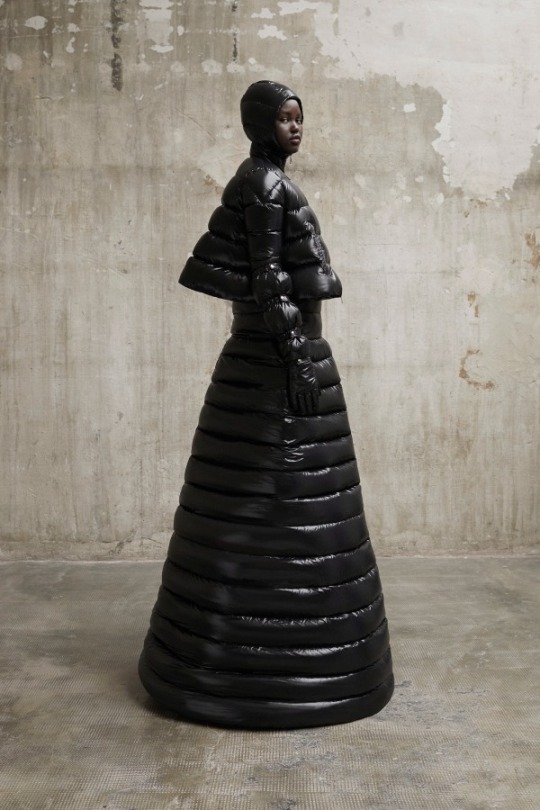




(モンクレール ピエールパオロ・ピッチョーリ(MONCLER Pierpaolo Piccioli ) 2018-19年秋冬コレクション - ファッションプレスから)
4K notes
·
View notes
Text
Resources For Describing Emotion
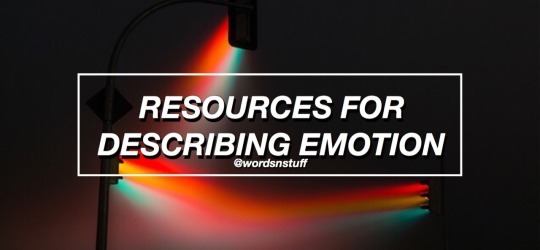
Emotions
Without Making Your Character Feel Too Self Aware
Showing Emotion Without Telling About It
Emotions Associated With Body Language
Telling Readers What The Character Doesn’t Want To Show
Hiding Emotions
Expressing Cardinal Emotions: Masculine vs. Feminine
Writing Extreme Emotion Without Melodrama
Specific Emotions
Conveying Shock
Conveying Embarrassment
Conveying Disappointment
Conveying Love/Attraction
Conveying Annoyance
Conveying Relief
Conveying Uncertainty
Conveying Impatience
Conveying Shame
Conveying Resentment
Conveying Panic
Conveying Guilt
Conveying Desperation
Conveying Sarcasm & Verbal Disrespect
Conveying Confusion
Conveying Stubbornness
Conveying Frustration
Conveying Indifference
Conveying Indignation
Conveying Confidence & Pride
Conveying Smugness
Conveying Enthusiasm
Conveying Curiosity
Conveying Hopefulness
Conveying Unease
Conveying Reluctance
Conveying Worry
Conveying Humility & Meekness
Conveying Happiness & Joy
Conveying Amusement
Conveying Disgust
Conveying Resignation
Conveying Jealousy
Conveying Anticipation
Conveying Contentment
Conveying Defeat
Conveying Excitement
Conveying Fear
Conveying Hatred
Conveying Hurt
Conveying Being Overwhelmed
Conveying Sadness & Grief
Conveying Satisfaction
Conveying Somberness
Conveying Sympathy & Empathy
Conveying Wariness
Conveying Defensiveness
Conveying Desire
Conveying Doubt
Conveying Energy
Conveying Exhaustion
Conveying Hunger
Conveying Loneliness
Conveying Physical Pain
Emotional Wounds
A Role Model Who Disappoints
A Sibling’s Betrayal
A Speech Impediment
Becoming a Caregiver at an Early Age
Being Bullied
Being Fired or Laid Off
Being Held Captive
Being Mugged
Being Publicly Humiliated
Being Raised by Neglectful Parents
Being Raised by Overprotective Parents
Being So Beautiful It’s All People See
Being the Victim of a Vicious Rumor
Being Stalked
Being Trapped in a Collapsed Building
Being Unfairly Blamed For The Death of Another
Childhood Sexual Abuse (by a family member or known person)
Discovering One’s Parent is a Monster
Discovering One’s Sibling was Abused
Experiencing a Miscarriage or Stillbirth
Failing At School
Failing To Do The Right Thing
Financial Ruin Due To A Spouse’s Irresponsibility
Finding Out One’s Child Was Abused
Finding Out One Was Adopted
Getting Lost In a Natural Environment
Growing Up In A Cult
Growing Up in a Dangerous Neighborhood
Growing Up In Foster Care
Growing Up In The Public Eye
Growing Up In The Shadow of a Successful Sibling
Growing Up with a Sibling Who Has a Chronic Disability or Illness
Having Parents Who Favored One Child Over Another
Having To Kill Another Person To Survive
Infertility
Infidelity (emotional or physical)
Losing a Limb
Losing a Loved One To A Random Act of Violence
Making a Very Public Mistake
Overly Critical or Strict Parents
Physical Disfigurement
Rejection By One’s Peers
Telling The Truth But Not Being Believed
The Death of a Child On One’s Watch
Victimization via Identity Theft
Watching A Loved One Die
Wrongful Imprisonment
Spending Time In Jail
Suffering From a Learning Disability
Motivation
Achieving Spiritual Enlightenment
Avoiding Certain Death
Avoiding Financial Ruin
Beating a Diagnosis or Condition
Being Acknowledged and Appreciated by Family
Being a Leader of Others
Being the Best At Something
Caring for an Aging Parent
Carrying on a Legacy
Catching The Bad Guy or Girl
Coming To Grips With Mental Illness
Discovering One’s True Self
Escaping a Dangerous Life one Doesn’t Want
Escaping a Killer
Escaping a Widespread Disaster
Escaping Confinement
Escaping Homelessness
Escaping Invaders
Finding Friendship or Companionship
Finding a Lifelong Partner
Having a Child
Helping a Loved One See They Are Hurting Themselves and Others
Obtaining Shelter From The Elements
Overcoming Abuse and Learning To Trust
Overcoming Addiction
Protecting One’s Home or Property
Pursuing Justice For Oneself or Others
Realizing a Dream
Reconciling with an Estranged Family Member
Rescuing a Loved One From a Captor
Restoring A Name or Reputation
Righting a Deep Wrong
Seeking Out One’s Biological Roots
Stopping an Event From Happening
Trying Again When One Has Previously Failed
Support Wordsnstuff!
Request A Writing Help Post/Themed Playlist/Writing Tips!
Send Me Poetry To Feature On Our Instagram!
Receive Updates & Participate In Polls On Our Twitter!
Like us and share on Facebook!
Read More On Our Masterlist & See our Frequently Asked Questions!
Tag What You Want Me To See With #wordsnstuff!
Participate in monthly writing challenges!
107K notes
·
View notes
Photo

Outfit for Syal Antilles Fel “Wynssa Starflare”
Delpozo Spring/Summer 2017
42 notes
·
View notes
Text
Underlined PSA
Figment, the recently closed writing website, has just launched (after a long delay) their long-awaited successor to figment known as Underlined, where users can post their work and receive feedback, supposedly.
DO NOT USE UNDERLINED. DO NOT POST YOUR WORK ON UNDERLINED.
Underlined’s terms and conditions contains a clause stating that the rights to all your work that you post on their website belongs to them!!!!
Underlined belongs to Penguin Random House. This is an extremely dirty trick for them to play on writers, especially young writers and children, who come to the internet to get feedback and will lose the rights to their work. Please boost!!!
54K notes
·
View notes
Text
more ridiculous things i’ve done for writing:
- weighted a grapefruit in my hands to see if i could justifiably describe something as “weighing as much as a grapefruit”
- done jumping jacks for 5 minutes straight so the memory of how exertion feels would be fresh in my mind
- googled images of butterscotch to see if “butterscotch” could be a hair colour
- casually stared at people at bus stops trying to figure out how i would hypothetically recreate their image in words
- written 7 different beginnings for a story to see which one i liked best
- gone to venice
- enthusiastically spoken dialogue aloud to myself to see how it sounds
- tried to read 3 books in one day
- experienced terrible things, reacting with “i can write about this”
- screamed incoherently at someone for turning on the tv while i was in the room, writing
- sat there perfectly still staring into space trying to imagine what getting a boner feels like
- “hey re-enact this scene with me”
- sat upside-down for ten minutes trying to get my brain to work
- squandered schoolwork and free time alike for years
- written
106K notes
·
View notes
Photo







Mireille Dagher “Live by the Sun, Love by the Moon” 2016 Haute Couture Collection.
7K notes
·
View notes
Text
Plot fillers
I have all these concepts for the things I’m writing and most have them have sooooome plot, but I really struggle with plot fillers and things that help develop my characters and my story. So I have compiled a list of common plot fillers for the genres I mostly write in. Some of them are pretty basic but HEY, WHATEVER. Here they are:
Meeting someone your MC falls in love with, or just becomes really close friends with them, leading this person to become an important character. Romance doesn’t need to be in every book. I enjoy both reading and writing it though.
Another important character meeting/liking/falling for someone and how that affects your main character.
Losing someone important to them (this could be death, or in some other way). How does your character cope? Did they rely on this person?
Drug/alcohol usage or someone other than your main character using is a good way to include any characters morals and to gain insight into other characters.
One character finds their SO cheating or suspects they’re cheating. This is easy to write and can make a good sub plot.
If it is a fantasy story it is always good to incorporate the history of magic (or whatever fantasy you’re writing about) as it gives the reader an insight into your world, making it easier to relate to the characters.
My favourite is when a good character turns out the be the bad guy. I know this is basic but done right it can be such a plot twist and it’s gets me so pumped. Alternatively, turn a bad guy into a good guy.
Have a bad guy do something a good guy would normally do. Don’t necessarily have them change sides, just give them some humanity.
Chuck in an argument between your MC and their closest friend. How do they handle the fight? Do they feel guilty or do they think they’re in the right and their friend is wrong.
Even though it is super overdone, I still enjoy a good love triangle, (bonus points if the underdog wins).
Flashbacks, that give insight into any characters lives.
I thought I had more ideas, but my brain is shooting blanks. Feel free to add to this, so I can steal borrow, your ideas. (PS. Sorry for the typical ideas, thats my life).
191 notes
·
View notes
Text
How to Handle Blocking in Your Story
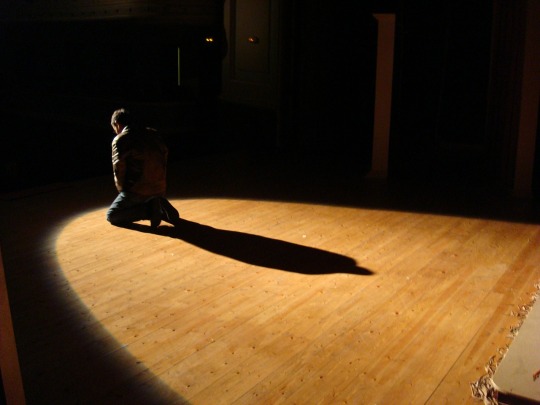
Hopefully by now you know that in most of your scenes you need to have a character in a setting with tension, but there is an area of writing where I don’t feel like we spend enough time talking about, which is blocking. And I’m not talking about writer’s block.
The term “blocking” is borrowed from play performances. Blocking is just about anything an actor does that isn’t dialogue: where they stand, where they look, how they interact with the setting, how they move across the stage, how close they are to what, how they interact with props. Often audiences pay little attention to blocking, or rather they don’t think about it enough to appreciate it.
But if a play has little to no blocking, well, that’s a tough play to sit through as an audience. They may not always have an eye for great blocking, but they’ll notice if it’s not there.
Blocking is just as important in fiction writing. And like with plays, it’s likely the reader won’t appreciate great blocking, but they’ll get antsy and annoyed if there is no blocking, and they’ll get confused if there is poor blocking.
If you don’t use blocking, not only does it make it difficult for the audience to imagine where your characters are relative to the setting, but you’re selling your story short by not using it to your advantage.
As an editor, I see blocking problems crop up from time to time, usually in dialogue scenes. The writer will tell me where the characters are (for example, cooking in the kitchen), but then as I read the scene, I get no sense of specifically where each character is in the room, what each one is doing, if they are standing at an island or sitting at the table, chopping lettuce for a salad, or loading the dish washer. Next thing I know, not only are they done cooking, but they are done eating and are outside getting in the suburban.
Sure, some scenes don’t require much, if any, blocking. But in most scenes, you need some sense of blocking.
Likewise, you can over-block a scene–putting so much blocking in, that it becomes unnecessary, sucks up the scene’s focus, and slows the pacing.
A great narrative hand knows how much to guide the reader and when to back off.
So let’s get to some tips about blocking:
Watch out for:
- Continuity Errors. One of the main problems I see with blocking in unpublished fiction is continuity errors. In one line, a character is sitting on a couch in the living room, and a few lines later, she’s sitting on her bed, in the same scene with no sense of motion. Often it can happen with objects characters are holding. Misty is knitting a scarf, but then a few lines later, it says she’s knitting a blanket. It can happen with food. Zack has a cup of orange juice, but later it talks about how he’s enjoying the taste of coffee.
Watch out for when characters’ hands are full or when you have them doing something they aren’t capable of. For example, say it’s been recently established that Sandra glued back together two broken figurines and she’s holding one each hand. While she’s waiting for them to dry, she doesn’t dare put them down , and then suddenly she’s buttoning up the jacket of her little boy. What happened to the figurines?
In some cases, motions can be assumed–but make sure they can be, or that you imply them somehow, so that it doesn’t read like a continuity error.
Watch out for having characters sit down, who were already sitting, or characters standing up who were already standing. Characters who put on their shoes twice, or turn off the fan twice.

- Spatial Vagueness. I’m trying to decide if I see this one more than continuity errors … and I have to say probably. Another one of the most common problems with blocking, is vagueness. This usually happens because the setting, objects, or characters’ distances from one another or other things haven’t been properly established. I might get a line that says, “Joey walked down the street”–and as the scene goes on, I get no sense of what street, what city, what it looks like, what season it is, or where or why he is walking in the first place. Sometimes I don’t get any sense of setting and only conversations and body language, and next I know, I read the line “Tiff walked inside.” What? They were outside that whole conversation? And what did she walk into?
When blocking is vague, the audience has to fill in the blanks, which can be a problem if it’s not what the author actually pictures. As an editor, this often happens to me. I’ll be picturing the characters sitting in opposite places in a living room, and then suddenly I’m reading how one put her arm around the other. In my head, they weren’t close enough to each other to do that.
Use:
- Specificity. Being specific isn’t necessarily the same as being detailed. Details can help make something be specific, but they aren’t the same thing. And with blocking, in some cases, the more detailed it is, the more it hurts the story because it slows the pacing and changes the story’s focus. In my example above, “Joey walked down the street,” the sentence can be more specific by adding and changing a few words. “Joey walked down Mulberry Street, autumn leaves crunching under his feet.”
In certain kinds of action scenes, it can be very important to be specific in word choice, and not in details. “Joey leapt for the fire escape.” “Margaret hit Lolly in the jaw.” But if you try to put too much detail into action, it can slow the moment way down.
In some cases, it’s helpful to establish the setting before the characters start interacting with it. This makes the setting or “stage” more specific in the reader’s mind. They know there is a pool table and pinball machine in the room, so when one character slams the other into the pool table, it makes sense. Be specific, not vague. How much detail you include depends on pacing and the focus of the scene.
- Blocking to contribute to or emphasize points. This is especially true for conversations. As an argument gets more intense, a character may invade the other’s personal space. If one character suddenly says something that makes the other uncomfortable, the latter may take a step back. If one character is vulnerable, whether the second draws closer or steps away can convey a lot.
Of course, you can use setting and props to do the same thing. As an argument gets intense, one character throws something at the other. If someone is uncomfortable, she might put something (an island, a couch, a car, a teeter-totter) between them. If she’s feeling vulnerable, she might “hide” or “block” herself by getting a blanket, picking up a book to look at, or turning away from the speaker to pretend interest in a rose bush.
When Sherlock gets frustrated, what does he do? He stabs the mantle. He puts a bullet in the wall.
This is blocking that emphasizes and contributes to the situation or point at hand.
Even in a scene where blocking is the primary focus (building an invention, competing in America Ninja Warrior, forging a sword, hunting), how the character interacts with the setting and objects can emphasize points–how tightly he holds a screwdriver, how sweaty her hands are against a climbing wall, the way he beats the metal, how many shots she shoots.
You can also use blocking to heighten tension. “He picked up a knife and concealed it under the table,” immediately adds tension and anticipation to a scene.

- Blocking to Convey Character. Similar, yet different from, the last section, you can use blocking to convey character, rather than just the moment at hand. The fact that Sherlock stabs the mantle whenever he gets frustrated is something specific to his character. It helps establish who he is. And actually, that fact becomes specifically important in season four–when we understand that he, someone who is supposedly not driven by emotion, sometimes manifests more raw emotion than any one else.
A character who sees litter at a park and picks it up is much different than one who adds to it. A character who comforts a crying stranger is different than one who ignores them. A character who always makes sure she’s near an exit is different than one who could care less. Blocking is great to show character and their feelings, rather than tell them.
- Blocking to give motion to still or stagnant scenes. You may sometimes have scenes where all that really matters is the conversation between two of your characters, or maybe you need to have your character delve into a moment of introspection to solve a mystery. It might not matter even where this moment takes place. A lot of beginning writers will open a story with a character sitting and thinking. One of the reasons this is a problem is because there is no motion, there is nothing happening in the present moment.
Use blocking to add motion. Instead of having your character sit and think, maybe you can have her catching insects for her bug collection while she thinks. Not only does this create more motion and interest, but also gives you material for the two bullet points before this one, so that it can actually add to the introspection and characterization. The fact she just caught a monarch butterfly might not be important to the main plot, but it tells us more about her, and in fact, you can even use that event and butterfly as a type or symbol of whatever she’s thinking about for added emphasis and tone.
With that said, some conversations are very important, interesting, have high tension, or natural draws–they may have incorporeal motion–and already carry the audience, and sometimes when you put in blocking, it actually takes away from that, instead of contributing to it, by drawing away the audience’s attention. Their attention to the conversation is competing with the blocking. So watch for that.
- Blocking for natural pauses, lulls in conversations, and for beats in dialogue. On the topic of dialogue exchanges, when there is a natural pause in dialogue or a lull in conversation, instead of saying “There was a moment of quiet,” you can put in a bit of blocking to convey that.
“Forget it,” Fred said. “I didn’t want your help anyway.”
Nancy looked down at the scarf she was crocheting and realized her hands had stopped moving. She put the scarf down on the coffee table, and flattened it out as she tried to find her words.
“You like her, don’t you?” she asked.
You can also use blocking for beats in dialogue. Rather than always using dialogue tags, you can use a beat to imply who is speaking what line.
“Cedric Diggory was murdered,” Harry said.
“Whatever you’ve been told,” Professor Umbridge said, “that. Is. A. Lie.”
Harry shot up out of his desk. “It’s not a lie!”
Keep reading
4K notes
·
View notes
Text
Guide: Naming a Town or City
There are many things to keep in mind when naming the town or city in your novel:
1) Genre/Theme/Tone
It’s very important to consider the genre and theme of your story when choosing a town name. Take these names for example, each of which indicates the genre or theme of the story:
King’s Landing (sounds fantastical)
Cloud City (sounds futuristic)
Silent Hill (sounds scary)
Sweet Valley (sounds happy and upbeat)
Bikini Bottom (sounds funny)
Radiator Springs (sounds car-related)
Halloween Town (sounds Halloween-related)
Storybrooke (sounds fairytale-related)
2) Time/Place
It’s also important to consider the time and place where your story takes place. For example, you wouldn’t use “Vista Gulch” as a name for a town in Victorian England. You probably wouldn’t use it for a town in modern day North Carolina, either. Vista is a Spanish word and would normally be found in places where Spanish names are common, like Spain, Central and South America, the southwest United States (including southern California), Cuba, Puerto Rico, Dominican Republic, and Florida.
3) Size/Settlement Type
An isolated town of 300 people probably won’t be Valley City, but a sprawling metropolis of 30 million could be called Windyville, because it could have started out as a small town and grew into a large city.
4) Geography
Words like gulch, butte,and bayou tend to be regional terms. You probably wouldn’t find Berle’s Bayou in Idaho, or Windy Butte in Rhode Island.
Words like mount, cape, and valley are dependent upon terrain. Most of the time, you won’t have a town named “mount” something unless there are hills or mountains nearby. You wouldn’t use “cape” unless the town was on a cape, which requires a large body of water.
5) History
Is there a historical person or event that your town might be named after? The Simpsons’ hometown of Springfield is ironically named after its founder, Jebediah Springfield. Chattanooga, Tennessee is named after the Cherokee town that was there first. Nargothrond, in The Lord of the Rings, is an Elvish town with an Elvish name.
6) Combination of Words
person name + geographical term = Smithfield, Smith Creek
group name + geographical term = Pioneer Valley, Settlers’ Ridge
descriptive word + geographical term = Mystic Falls, Smoky Hill
person name + settlement type = Smithton, Claraville
landmark + settlement type = Bridgton, Beaconville
Word Lists:
Types of Settlements

Geographical Features
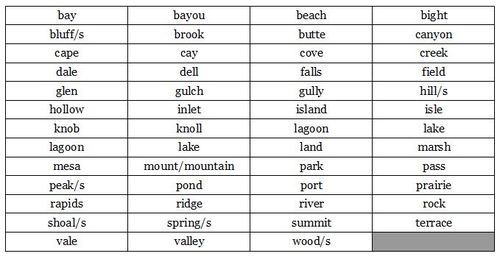
Place Words
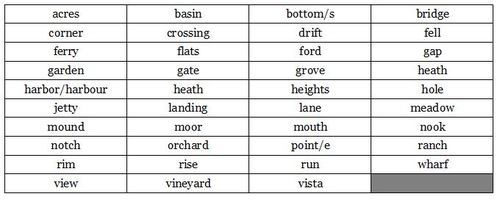
Common Suffixes

Other Descriptors

Try a combination of two words from any of these lists. :)
35K notes
·
View notes
Text
Quick And Dirty Tips For Creating Subplots
– Not everyone should love the hero.
– The more antagonists you have the more conflicts you create.
– Real life should happen to the characters, even if they are saving the world they have jobs and responsibilities.
– Give the character interests and friends outside of work.
– Multiple point of views aren’t a bad thing if you know how to juggle them.
– It all needs to come together at the end.
– Not every antagonist needs to be vanquished at the end.
– – Give us more than one character to love– (from Diantha)
— Make each and every character count — (from Diantha)
Stories need subplots. Make sure yours has one.
39K notes
·
View notes
Text
Cultural Divide.
My American mother in-law sending me an email: Hey! Let’s do something, I’m going to the garden center soon, want to come?
Me: Oh cool that sounds like fun!
MIL: Yea! I want to finish making my fairy door in the garden this spring :)
Me, Scottish with Irish grandparents, shoving iron into my pockets and throwing salt everywhere: …great.
12K notes
·
View notes
Text
Self-Defense: The Predator is Exploiting You
How practical are those self-defence (the kind learnt in a few lessons) moves being taught to women in a real life situation?
Editing Note: I, normally, never do this, but I’m culling out the rest of this question. There was some additional, irrelevant, inflammatory material tacked on, but this part is worth answering.
The very short answer is, “yes.” When you see someone practicing an adapted Judo wrist lock, or a throw on a YouTube video someone linked to your dash, it probably works. I’ve seen a few that don’t, but a lot of those are functional techniques that can be taught in an accelerated environment over 6 to 8 weeks. (Honestly, most of those can be trained, individually, in an afternoon.)
But, we don’t link those. Without exception, those techniques will not work without training. They’re also not going to be reliable if your only self-defense training was a six hour seminar fifteen years ago.
The most important lessons you will ever learn in a self-defense seminar are not about your body. They’re about your mind and your approach to a situation where you are in danger. People like to categorize this as “men” and “women”, but it’s not. Acts of violence are acts. Violence is about action. It is a choice made by one human being to do harm to another. In these situations, you’re looking at an actor and a recipient of the action. The recipient is the victim, the recipient feels out of control, they’re startled, frightened, and they’re intrinsically playing catch up to a premeditated decision made by the other party.
This is the advantage of your attacker in any situation. Whether the abuse is physical or verbal, you must understand that they are decisions made by another person to do you harm. Because that decision precipitates the action, the attacker is already ahead in terms of mental calculations. A predator picks out their prey, they find a way to get close to their prey, they choose them. What you need to understand upfront is these acts are choices by an individual, and those choices are where their power over their victim resides. That’s what let’s them control the moment. Control, not strength, is victory.
Once you grasp this, concepts like strength become less important. A woman can overpower a man in a violent situation, a woman can be an attacker and an abuser. This isn’t because she’s necessarily physically stronger than the man, or because she’s an anomaly, but rather because she made the decision first. She got there first, she decided first. That’s her advantage. Those crucial seconds in decision making are the difference between victory and defeat, whether you are doing or having something done to you.
Self-defense is trying to teach the recipient how to be an actor. A good seminar is trying to train you to retrain your mind, the way you look at your environment, teach you how to make threat assessments, and how to quickly transition from paralyzing panic to launching yourself into action. That switch over within your mind is what will ultimately be the deciding factor in terms of victory or defeat. This is the major difference between a trained combatant and a civilian. Trained combatants are primed to go, often to preempt an attack and be ready when it comes. This doesn’t always work, but they’re better at it than the average person. They’re quicker on the mental rollover, and they know those crucial seconds at the beginning of a fight are the difference between victory and defeat. When it comes to male predators, active decisions versus panic, fear, and surprise is often mistaken for physical strength. They feel stronger because they’re attempting to initially overwhelm, and, once you’re overwhelmed, they believe you won’t fight back.
Self-defense training does work. However, like all training, what you get out of it directly relates the effort you put in.
So, two parts. Simply seeing someone demonstrate a technique isn’t enough to replicate it. Practicing a technique for a few hours in a controlled environment isn’t enough to perform it reliably in a tense situation. This is the problem with those videos, and can be a problem with some self-defense classes.
For example: Yes, you can roll your hand out of someone grabbing your wrist, reverse it, and then use that as leverage to force them to their knees. Without checking, do you know where to put your thumb to make sure the second part of that actually works? Do you understand how to do the first part? Because it is simple, but it relies on an understanding of how the human grip functions, and which parts are strongest. You won’t get that from simply watching a couple in a .gif screwing around. That’s the technique you watched, but what do you do next? Because you don’t have much time to get your next action in motion before they’ll respond. It’s a good technique, and as part of a larger strategy it can, absolutely, save your life. However, it also requires you know what you’re doing, which you won’t get from watching someone from a video in 2014.
The second part is you need to practice your training. If you don’t practice until it becomes second nature, you will have to think about what you’re doing in combat. This will slow you down, and will get you seriously injured or killed.
Let me give you a concrete example of this: I can’t do throws. I mean, I understand the theory, in some cases I remember pieces of the technique, but I don’t actually remember how to do them. I can’t remember enough of it to make them work in a live situation. Now, if you’ve been around here long enough, and paid enough attention, you probably know my background is Police Adapted Judo. This is a martial art with a large number of throws. This is a martial art that will happily send someone to the ground, and then follow them there. Most martial arts won’t intentionally go to ground fighting and stay there, but this one will. I can’t remember the throws. I didn’t practice them after I learned them, and now, 20 years later, that’s gone. I could relearn them, and it would probably be easier than starting from scratch, but I cannot actually use those in a fight.
(To be fair, this isn’t entirely true, there are one or two Judo throws I still remember, but the vast majority are effectively gone.)
The entire reason why traditional martial arts training is slow, is because the goal is to “rewire” your reactions. You’re learning entirely new kinds of movement. You’re training new responses, and then working them in, until you get to the point where you can simply, “do,” the thing, and you don’t have to think about doing it. There’s no shortcut for that.
Self-defense, and a lot of accelerated combat training, turn the expectations around. Instead of working these new patterns into your movements first, and then learning to apply it, you start by teaching someone how to use this training, and then you get them to work it in on their own time. This results in a shorter turnaround, but you sacrifice versatility. You train to specific attack patterns rather than learning to assemble what you’re doing on the fly. It also results in training that is more volatile, meaning it’s easier to lose it if you don’t keep up with practicing what you’ve learned.
The end result is that, yes, the stuff you learn in those courses can be highly effective. Given time, training, and commitment, it can result in a martial artist who has an excellent skill set for ensuring their own safety.
There’s another, far less sexy, part to any comprehensive self-defense course: Risk assessment and avoidance. This isn’t about learning how to throw someone over your shoulder, or run your knee into their face, it’s how to avoid getting into those situations in the first place. Some of this is physical, for example, but a lot of it is teaching someone how to avoid being profiled as a potential victim. We cover some details of this from time to time. Things like maintaining situational awareness may not sound as cool as talking about how you could potentially break a dude’s wrist, but it is infinitely more useful in ensuring you can effectively avoid situations where you’d need to. These skills keep you safe.
Things like being able to quickly formulate an exit plan are also very useful , and any good self defense class will include them. As with the rest, this is an excellent survival skill, but it’s not about the violence; combat is simply one tool that you can employ to affect an escape.
As with all martial arts, the quality of your instructor will affect the quality of your training. However, assuming you have solid training, and you’ve kept up with it, this stuff can safe your life.
I mentioned people linking videos before, and honestly, there’s always something heartbreaking to me about those post. Someone always chimes in saying something to the effect of, “reblogging, because if I’d seen this, I could have prevented X.” I’m sorry, I really am, but, when it’s couched like that, it’s almost never true. If they’d known how to do that, then it might have made a difference, but watching an 8 second .gif is no substitute for training.
Training is not a panacea, but it does offer more options. It can keep you safe. What they’ve seen in a video is one of those options, usually an option of last resort that’s already somewhat risky, but it is an option. However, taken by itself, one technique is not a universal solution.
Something else happens with martial arts training (doesn’t matter if it’s traditional, or accelerated) which can make you substantially safer: It builds self-confidence. This makes you less appealing prospect to people who are looking for potential victims. It will not eliminate all threats, but it is a major boon for giving you the ability to maintain control when others are trying to take it from you.
If those, “if I’d seen this,” comments resonate with you, either because you’ve been there, or you’re afraid of being there; I would strongly recommend finding a reputable self-defense class in your area and enrolling. Many colleges and community centers offer classes. Even your local police may run one as an outreach program. This stuff does work. It can save your life. But, you do need to learn the full skill set. Some local martial arts schools may offer effective self-defense training as well.
Self-defense and martial training in general are trying to drill into you the skills necessary to take the power back in a situation where your life is under threat. Those begin, first and foremost, in your mind. Your power lies in your control over the situation, in taking back the control from someone trying to wrest it from you, in taking ownership of the situation, and pushing back. To do that, you have to believe it. You can’t fight yourself and someone else at the same time. This is, ironically, where the quintessential Yoda quote comes in: “do or do not, there is no try.” There is no room for second guessing, for questioning, or wondering whether this will be possible. You must do. When you are in the middle of battling yourself, battling cultural conditioning, battling the inhibitors put on your behavior to prevent you from actively taking control, you won’t be able to effectively defend yourself from someone who has already made the decision to hurt you.
The difference between you and your attacker is in the Sun Tzu quote, “Thus it is in war the victorious strategist only seeks battle after the victory has been won, whereas he who is destined to defeat first fights and afterwards looks for victory.”
When you believe you’ve lost, well, you’ve lost. This is what the predator is banking on. They believe they will win, and you will accept that defeat is inevitable. When you begin with the assumption they’re stronger than you, you’ve let them fool you. You’re already well down that road to losing the fight before it ever began. After all, violence requires commitment. The predator is relying on your inability to make that commitment in the moment, to give up, and ultimately cede them control over what happens to you. The human predator is like every other. They aren’t here for a fight, they’re looking to exploit their victim for the easy victory. That doesn’t mean their victim is weak, either. A predator is looking for an easy victory because they are ultimately weak. They’re searching for a safe win. They want the odds stacked in their favor. They don’t want to deal with resistance. They want the situation to be under their control from the beginning to end because they don’t want to take any real risks.
After all, this isn’t about strength. This is about someone exploiting the way the human mind works under pressure, and the societal conditioning already in place. The predator isn’t stronger than you. He’s exploiting your natural behavior, he’s exploiting societal behavior, social norms, and expectations. He is structuring the situation to specifically put you at a disadvantage. The playing field is not level by intentional design. This has nothing to do with natural differences in physiology, and by thinking that way you cede them an advantage they don’t deserve.
They’re not stronger than you. They’re not better than you. They’re not smarter than you. They just made the decision before you did; knowing they could exploit your immediate, natural reaction. If you ever have to question what base instinct looks like in a human being, this is it. The predators are actively exploiting your fight or flight instinct with the expectation you will take the third option and freeze.
Before techniques, the the first truth you need to accept is that the scales are weighted unevenly by human hands; not by nature’s. Which means, you too have the potential to go and tip them right back into your favor. Or just break the scales.
You don’t have to fight by their rules.
-Michi and Starke
This blog is supported through Patreon. If you enjoy our content, please consider becoming a Patron. Every contribution helps keep us online, and writing. If you already are a Patron, thank you.
Self-Defense: The Predator is Exploiting You was originally published on How to Fight Write.
813 notes
·
View notes